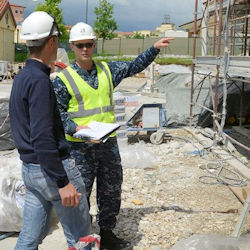Head Protection
Protective headgear, also known as hard hats or helmets, is designed to provide protection against head injuries in various industries and activities. OSHA incorporates American National Standards Institute (ANSI) Z89.1 and are made of high-density polyethylene (HDPE).
The first way hard hats are classified into different categories is based on the type of hard hat.
Type 1 Hard Hats: Type I hard hats are designed specifically to provide protection from falling objects. This type of head protection is commonly used at construction sites and other areas where work is done high above the ground. This is because high elevation work comes with an increased likelihood of falling objects causing injury, which is why type 1 hard hats are a necessity in these types of environments.
Type 2 Hard Hats: Type II hard hats provide protection from falling objects, but they also offer protection from lateral impact. This could be from running into the corner of a steel beam, having a projectile fly across a room, or any other risk to the sides or back of the head.
ANSI Classes of Hard Hats
In addition to the type categories of hard hats, there are different ANSI classes of protective headgear, each tailored to specific hazards and levels of protection. Here's a brief description of the common classes of protective headgear:
Class G (General): Class G helmets, also known as general-purpose helmets, are designed to provide protection against impact and penetration hazards. They are typically made of high-density polyethylene (HDPE) and offer limited protection against electrical shock. They are commonly used in industries such as construction, manufacturing, and general utility work.
Class E (Electrical): Class E helmets, also known as electrical helmets, provide protection against high-voltage electrical hazards in addition to impact and penetration hazards. These helmets are made of materials that offer electrical insulation, such as phenolic or thermoplastic shells. They are commonly used in industries where there is a risk of exposure to electrical hazards, such as electrical utility work and power generation.
Class C (Conductive): Class C helmets, also known as conductive helmets, do not provide electrical insulation. They offer protection against impact and penetration hazards but are not suitable for work environments with electrical hazards. Class C helmets are typically made of aluminum or other conductive materials and are commonly used in industries where electrical hazards are not a concern, such as construction and general industry.
Knowledge Check Choose the best answer for the question.
10-2. Which hard hat provides protection against high-voltage electrical hazards?
You forgot to answer the question!

